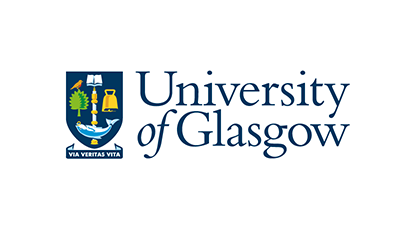The 1745 Jacobite Rising: What Is the Clans’ Role?

Share this step
The last Jacobite rising in 1745-6 (known as the ’45) was smaller in scale than the revolt in 1715, with perhaps 12,500 to 14,000 men fighting for the Stuarts.
The clans and the ‘45
Yet the ’45 was a far greater threat to the relatively new British union state. Charles Edward Stuart’s strategy relied on the aggressive use of rapidly moving armies to strike at the centres of political and financial power in Edinburgh and London.
 Charles Edward Stuart ©National Library of Scotland [Public domain]
Charles Edward Stuart ©National Library of Scotland [Public domain]
Charles arrived in Scotland from France on 23 July 1745. On 19 August he raised his father’s standard at Glenfinnan in the West Highlands and attracted about 1,300 men. The support of Donald Cameron of Locheil brought a 600 strong regiment and instilled confidence in other chiefs sceptical of success without large-scale French support.
 Donald Cameron of Locheil ©Contemporary portrait [Public domain]
Donald Cameron of Locheil ©Contemporary portrait [Public domain]
Evidence from the ’45 demonstrates how clans raised their manpower. In early September 1745, Charles wrote from Perth to John Campbell, second earl of Breadalbane in the following terms:
The men of Deshoir and Lochtay are ordered to be at the Port of Kenmore with their best arms and accoutrements against 12 of the Clock, Tuesday – a man out of each merkland, under pain of rebellion.’
A merkland was a unit of land value for the purposes of taxation. Given the number of merklands held by Breadalbane in these areas, this would have produced 321 men.
Opponents of the Jacobites emphasized the brutality of the recruitment process. There is no doubt that the threat of violence was responsible for ‘forcing’ some but by no means all men into service. Yet clans loyal to the government used similar tactics. On 14 February 1746 William Sutherland, seventeenth earl of Sutherland ordered the officers of his independent companies (military units of 60 to 100 men) to burn the houses and slaughter the cattle of his Rogart tenants if they did not supply thirty recruits.
 George Mackenzie, third earl of Cromartie. ©National Library of Scotland [Public domain]
George Mackenzie, third earl of Cromartie. ©National Library of Scotland [Public domain]
However these men fought well at the skirmish of Littleferry on 15 April, when the Sutherland companies defeated the Jacobite regiment of George Mackenzie, third earl of Cromartie. This was arguably the last substantial military engagement comprised only of clan levies.
The clans’ military development
The military forces used by the Jacobite and government clans were not obsolete relics, relying only on close quarter fighting and broadswords. After the battle of Culloden the British retrieved 2,320 muskets but only 190 broadswords. This ratio gives an indication of the reliance on firepower on both sides.
Clans were as adaptable in war as in social organisation, economics and culture. A British government report from 1744 welcomed the support of the Munros, noting that their military effectiveness involved rotating men into the Scots regiments in the service of the Netherlands. The men received training in drill, discipline and weaponry. Once back in their own localities these former soldiers enabled the Munros to fight in a combination of ways, including as a musket-based regiment.
The chief of the Frasers, Simon Fraser of Lovat had a similar strategy.
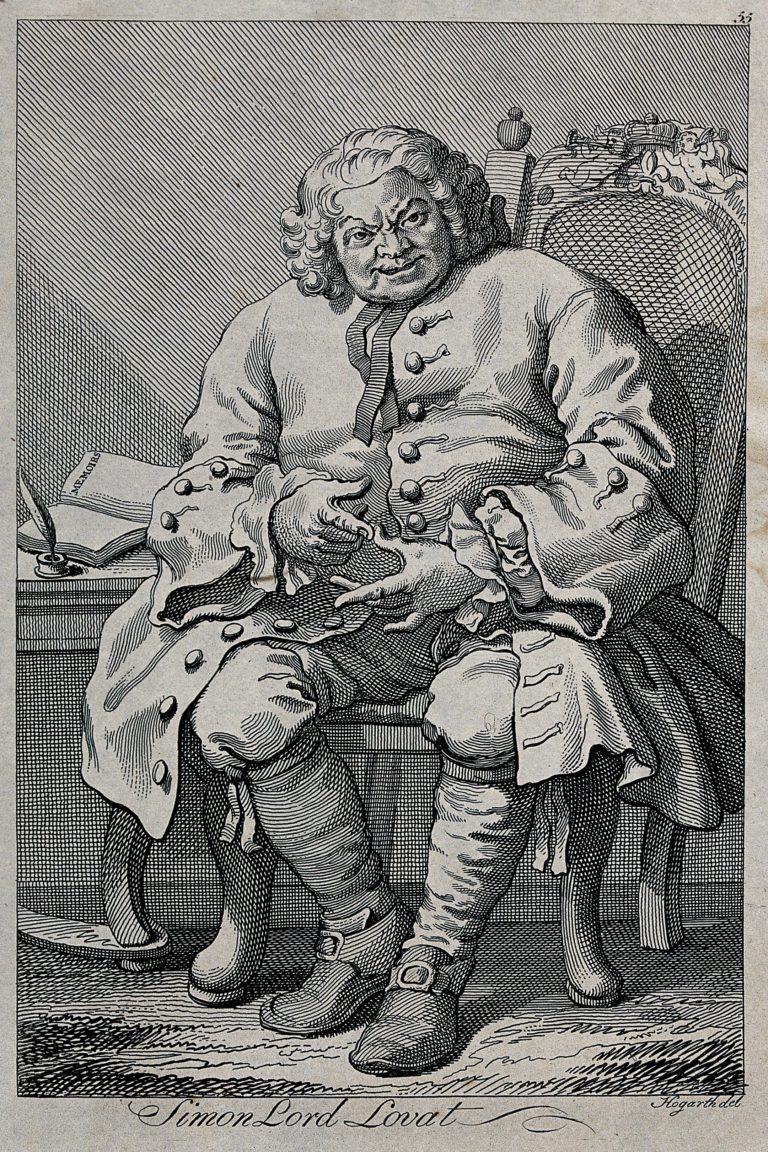 Caricature by William Hogarth of Simon Fraser, Lord Lovat drawn prior to his trial and execution in London for treason. It is reputed that Hogarth shows Fraser listing off the clans that fought for the Stuarts. ©[CC BY 4.0]
Caricature by William Hogarth of Simon Fraser, Lord Lovat drawn prior to his trial and execution in London for treason. It is reputed that Hogarth shows Fraser listing off the clans that fought for the Stuarts. ©[CC BY 4.0]
His command of a British army independent company in the 1720s and 1730s enabled him to train many of his own tenants in musket drill and close discipline. Ironically, the British government paid for the expertise of much of the Fraser manpower which performed so effectively in the Jacobite army in 1745-6. These developments meant that clan regiments made much greater use of muskets and conventional tactics than the stereotypical emphasis on broadswords and Highland charges would suggest.
The ‘45: success, invasion and retreat
Making excellent use of the roads built by the British army across Highlands, the Jacobites arrived in Perth on 4 September 1745. Edinburgh fell on 17 September. Matters went from bad to worse for the government when on 21 September around 2,000 Jacobites destroyed a 2,400 strong British army at the Battle of Prestonpans.
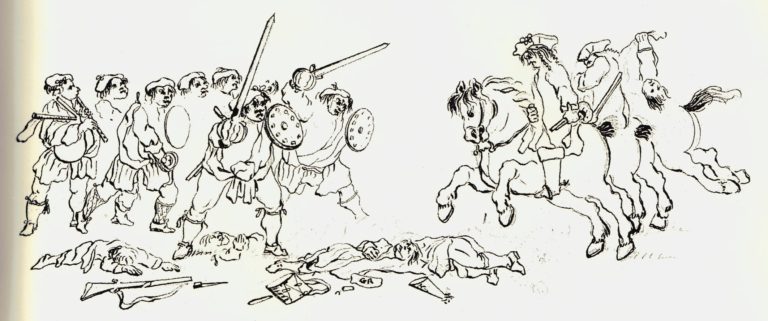 The Battle of Prestonpans, from the Penicuik Drawings. These contemporary drawings show a mixture of humor, caricature and fear towards the clansmen and chiefs who made up the bulk of the Jacobite army at this juncture. © [Public domain]
The Battle of Prestonpans, from the Penicuik Drawings. These contemporary drawings show a mixture of humor, caricature and fear towards the clansmen and chiefs who made up the bulk of the Jacobite army at this juncture. © [Public domain]
At this point the tensions between Jacobitism’s commitment to restore Scotland’s independence and the Stuarts’ unionist claims to all three kingdoms began to show. On 30 October, by one vote, Charles’s advisors agreed to invade England. A 5,500 strong force crossed the English border on 5 November and reached Manchester by 22 November. Discouraged by a lack of recruits in England but encouraged by news of a planned French invasion early in December, the Jacobites continued south. However, at a further meeting of the council on 5 December at Derby, only 128 miles away from London, the majority of Charles’s advisors, particularly key clan chiefs, secured the decision to retreat.
Even while on the defensive, the Jacobite army demonstrated its military capability. It proved effective at evading larger, slower moving government forces. In the largest battle of the campaign, at Falkirkmuir on 17 January 1746, a mixed force of clan and Lowlands units consisting of around 8,000 men defeated an 8,500 strong British army which included veteran regiments.
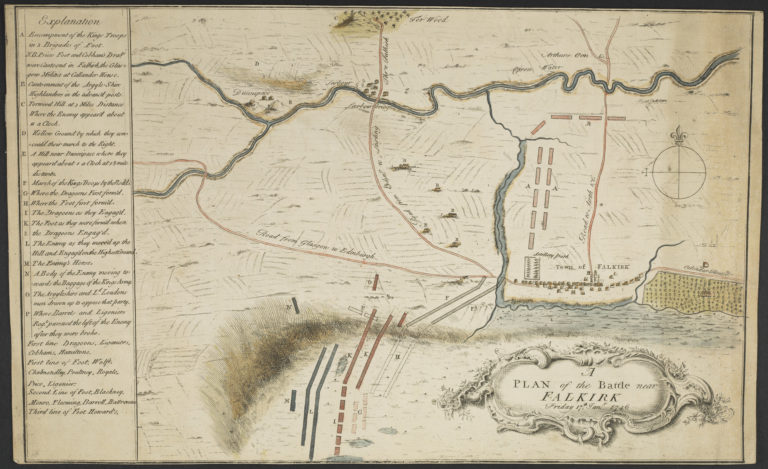 Plan of the Battle of Falkirk, 17 January 1746. The similar ‘line’ formation of both armies shown here underline how the Jacobites did not rely solely on sword and charge tactics. ©[Public domain]
Plan of the Battle of Falkirk, 17 January 1746. The similar ‘line’ formation of both armies shown here underline how the Jacobites did not rely solely on sword and charge tactics. ©[Public domain]
Detailed map of the Battle of Falkirk
The campaign in the north: Jacobite Lowlanders and Hanoverian Highlanders
In the north of Scotland, too, the Jacobites continued to outfight the government. A skirmish at Inverurie outside Aberdeen on 23 December 1745 confirmed their regional superiority. This northern branch of the campaign demonstrates the need to avoid simplistic assumptions about Highland support for Jacobitism and Lowland loyalty to the British government. Under the command of Lord Lewis Gordon, much of the Stuart forces were composed of recruits from the Episcopalian north east Lowlands.
By contrast, the British government army in the north was comprised mainly of independent companies raised among the Munros, the Grants, the Macdonalds of Sleat and Macleods of Dunvegan. The government troops were led by an officer with strong kin links in the Highlands, John Campbell, fourth earl of Loudoun. If there was a distinct ‘Highland army’ active in the ‘45, there is a good case for arguing it was on the government side.
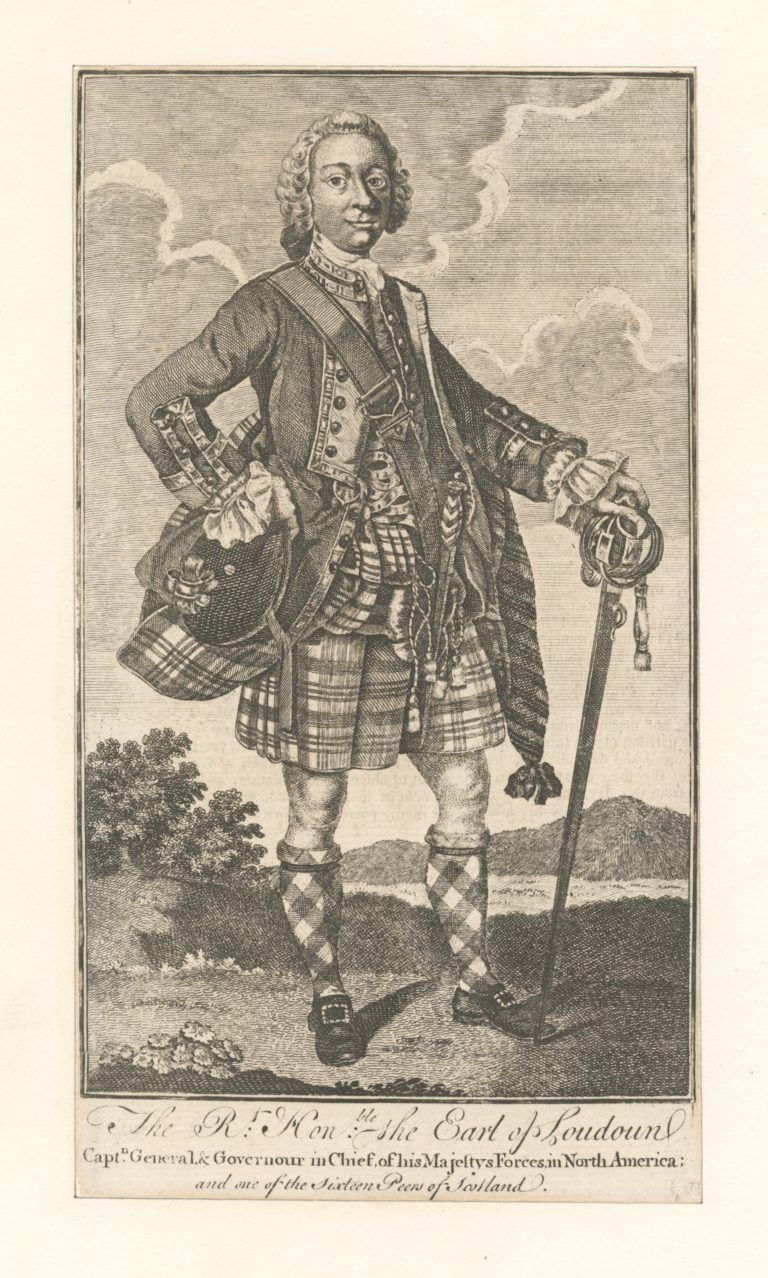 John Campbell, fourth earl of Loudoun ©NYPL [Public domain]
John Campbell, fourth earl of Loudoun ©NYPL [Public domain]
By mid-January 1746, however, the Jacobites were on the strategic defensive and a dispiriting retreat north ensued. By the middle of April, Inverness was the last substantial town still in Jacobite hands. Charles was determined to hold it as a supply base from which he could keep the army intact. This partly explains his decision to stand and fight at Culloden.
Further Reading
Francis Mary Hendry, ‘45 Rising; The Diary of Euphemia Grant, Scotland 1745-1746 (Southam, 2001)
Murray Pittock, The Myth of the Jacobite Clans (Edinburgh, 2009)
Stuart Reid, 1745: A Military History of the Last Jacobite Rising_ (Staplehurst, 2000)
Share this
The Scottish Highland Clans: Origins, Decline and Transformation

The Scottish Highland Clans: Origins, Decline and Transformation


Reach your personal and professional goals
Unlock access to hundreds of expert online courses and degrees from top universities and educators to gain accredited qualifications and professional CV-building certificates.
Join over 18 million learners to launch, switch or build upon your career, all at your own pace, across a wide range of topic areas.
Register to receive updates
-
Create an account to receive our newsletter, course recommendations and promotions.
Register for free

